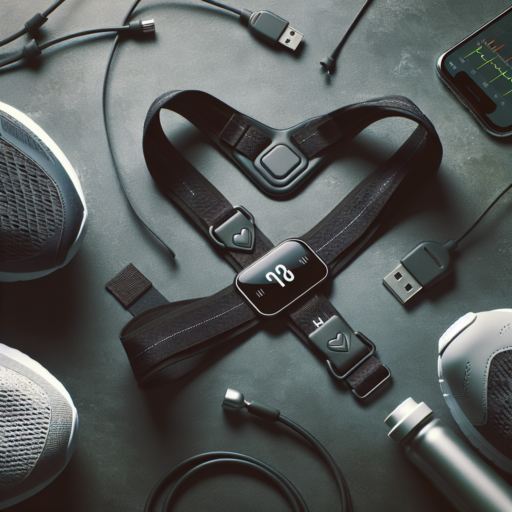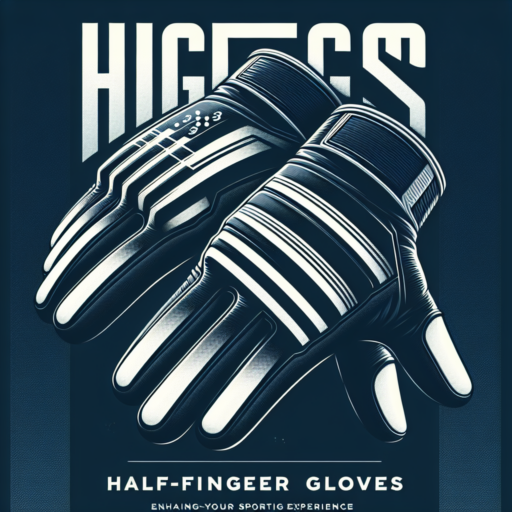What is an HR Chest Strap and How Does it Work?
An HR (Heart Rate) Chest Strap is a specialized device designed to measure the heart rate of an individual. It’s a popular choice among athletes and fitness enthusiasts who aim to monitor their heart rate in real-time to optimize their workouts. The chest strap is worn around the torso, right below the chest muscles, and is known for its accuracy and reliability compared to other heart rate tracking devices.
The core functionality of an HR Chest Strap revolves around electrical signals. When the heart beats, it sends out an electrical signal that can be detected by the sensors embedded in the strap. These sensors then transmit the data to a connected device, such as a smartphone or a fitness watch, allowing the user to monitor their heart rate in real-time. This mechanism ensures accurate heart rate readings, which are crucial for training within specific heart rate zones.
Moreover, the HR Chest Strap employs a wireless connection, often Bluetooth or ANT+, to sync data with other devices. This seamless connectivity not only facilitates the real-time monitoring of heart rate but also enables long-term tracking of heart rate trends and patterns. Such detailed analytics are invaluable for athletes looking to improve their performance and for individuals monitoring their heart health.
Top Benefits of Using an HR Chest Strap for Your Workouts
Exercising with a focus on heart rate monitoring has transformed the way athletes and fitness enthusiasts approach their workouts. An HR (Heart Rate) chest strap is instrumental in this revolution, providing a series of undeniable benefits for those looking to optimize their physical training. Understanding these advantages can help you make an informed decision about incorporating an HR chest strap into your exercise regime.
Accurate Heart Rate Data
The foremost benefit of using an HR chest strap is its accuracy in tracking your heart rate. Compared to wrist-based trackers, chest straps are positioned closer to the heart, offering readings that are significantly more precise. This precision is crucial for training within specific heart rate zones, ensuring your efforts align perfectly with your fitness goals. Whether you’re aiming to improve endurance, burn fat, or increase cardiovascular strength, having reliable data allows for targeted and effective workouts.
Enhanced Exercise Performance
With real-time feedback on your heart rate, an HR chest strap can significantly enhance your exercise performance. By monitoring your heart rate, you can adjust your intensity level on the spot to stay within optimal training zones. This not only maximizes the efficiency of your workout but also prevents overtraining and reduces the risk of injury. The ability to tailor your intensity based on precise heart rate readings ensures every workout pushes you closer to your fitness objectives without compromising your health.
Long Battery Life and Compatibility
Another compelling advantage of HR chest straps is their long battery life and wide compatibility with various fitness devices and apps. Unlike other fitness trackers, chest straps are designed for extended use, often lasting several months to a year on a single battery. This reliability ensures uninterrupted tracking of your workouts, keeping your training on course. Furthermore, most HR chest straps are compatible with a range of devices, from smartphones to sport watches, making it easy to integrate into your existing workout ecosystem.
How to Choose the Right HR Chest Strap for Your Fitness Goals
Choosing the right HR (Heart Rate) chest strap can significantly impact your fitness routine and achievements. With an array of options available in the market, pinpointing one that syncs seamlessly with your goals requires an understanding of key features and compatibility. This selection is not just about comfort and fit; it’s about elevating your training efficiency by monitoring your heart rate accurately.
Understand Your Needs and Compatibility
Initially, evaluate your fitness regime to understand the level of intensity and the kind of exercises you engage in. Whether you’re into high-intensity interval training, distance running, or cycling, different chest straps cater to varying needs. Additionally, ensure the HR chest strap is compatible with your existing fitness devices or apps. This synchronization helps in tracking your progress more effectively, enabling a comprehensive overview of your performance and areas for improvement.
Consider Comfort and Material
The comfort level of the HR chest strap is crucial for consistent use, especially during prolonged and intense workout sessions. Look for straps made from soft, flexible materials that prevent skin irritation or chafing. Equally important is the adjustability feature; it should fit snugly to your body to ensure accurate heart rate readings without slipping. Opting for a waterproof model is also beneficial for swimmers or if you tend to sweat a lot.
Reading Reviews and Recommendations can also steer your decision in the right direction. Garner insights from professionals or fellow fitness enthusiasts who share their experiences with specific brands or models. This firsthand information can highlight aspects you might not consider, such as the longevity and reliability of the chest strap beyond its initial appeal.
HR Chest Strap Vs. Wrist Heart Rate Monitors: Which is More Accurate?
When it comes to tracking heart rate, the debate between using a chest strap and a wrist heart rate monitor is ongoing. Both devices are designed for athletes and fitness enthusiasts to measure heart rate, providing valuable insights into training intensity and overall cardiovascular health. However, their accuracy in capturing heart rate data can differ, influencing the preference of users based on their specific needs and activities.
Accuracy of Chest Strap Monitors
Chest strap heart rate monitors are widely recognized for their high level of accuracy. These devices work by detecting the electrical signals produced by the heart as it beats, similar to an electrocardiogram (ECG). The close proximity of the chest strap to the heart allows it to capture a clear and direct signal, minimizing interference and delaying. As a result, many professional athletes and fitness experts prefer chest straps for precise heart rate monitoring, especially during high-intensity workouts.
Convenience and Comfort of Wrist Monitors
On the other hand, wrist heart rate monitors offer unparalleled convenience and comfort. These devices, typically housed in smartwatches or fitness bands, use optical sensors to detect blood flow changes through the skin, estimating heart rate. While this method is less invasive and more comfortable for all-day wear, it can be more susceptible to errors, particularly when performing motions that disrupt the sensor’s contact with the skin. However, the ease of use and the ability to track heart rate continuously without the need for additional equipment make wrist monitors a popular choice for many fitness enthusiasts.
No se han encontrado productos.
Setting Up Your HR Chest Strap for Maximum Accuracy and Comfort
When it comes to monitoring your heart rate during exercise, a properly set up HR chest strap can make all the difference. Not only does accurate heart rate data help enhance your training outcomes, but ensuring the strap is comfortable is equally vital to keep you focused during workouts. Here are some essential tips to guide you through the process of setting up your HR chest strap for maximum accuracy and comfort.
Finding the Right Fit
Finding the perfect fit for your HR chest strap is crucial. It should be snug but not too tight, ensuring it stays secure without restricting your breathing. Ideally, the strap should sit just below the chest muscles. An adjustable strap can accommodate fluctuations in size and ensure a comfortable fit over time. Briefly moistening the sensor pads on the back of the strap can also improve connectivity and result in more accurate heart rate readings.
Positioning and Sensor Contact
The position of the chest strap plays a pivotal role in both comfort and accuracy. It should be centered on your chest, right below the pectoral muscles. Ensuring the sensor maintains good skin contact is essential for accurate readings. This might mean adjusting the tightness of the strap or even shaving the area under the sensor if excessive body hair interferes with connectivity. A well-positioned chest strap, with optimal skin contact, significantly reduces the risk of erratic heart rate data.
Remember, your HR chest strap is a powerful tool in your fitness arsenal when set up correctly. By focusing on the right fit, perfecting its position, and maximizing sensor contact, you’ll ensure the data you gather is as accurate and reliable as possible, all while maintaining the comfort needed for long training sessions.
The Best HR Chest Straps of 2023: Our Top Picks
When it comes to tracking your heart rate accurately during workouts, HR (Heart Rate) chest straps stand out as an essential tool for athletes and fitness enthusiasts alike. In 2023, the market has seen remarkable innovations, making these devices not only more accurate but also exceptionally comfortable and user-friendly. Our top picks for the best HR chest straps of 2023 provide a seamless integration with various fitness gadgets, ensuring you get real-time data to enhance your training sessions.
Enhanced Accuracy and Comfort
The latest HR chest straps are designed with advanced sensor technology, ensuring that every heartbeat is captured with precision. Leading brands have also revamped their designs, focusing on lightweight, breathable materials that reduce skin irritation and discomfort during long workout sessions. These features underscore the balance between comfort and functionality, a crucial aspect that sets our top selections apart.
Compatibility and Connectivity
In today’s interconnected world, the ability of HR chest straps to seamlessly sync with various devices and fitness apps is a game-changer. Our top picks boast superior Bluetooth and ANT+ connectivity, allowing them to communicate with smartphones, GPS watches, and even gym equipment. This ensures that whether you’re a professional athlete or a fitness newbie, you can easily track your heart rate data across multiple platforms.
The evolution of HR chest straps in 2023 is a testament to the continuous effort to enhance athletic performance through technology. With our carefully selected top picks, you’re equipped to take your training to the next level, leveraging the latest in heart rate monitoring technology.
Tips for Maintaining and Cleaning Your HR Chest Strap
Caring for your HR (Heart Rate) chest strap properly ensures it continues to provide accurate readings and extends its lifespan. Whether you’re a seasoned athlete or a fitness enthusiast, knowing how to maintain and clean this piece of equipment is crucial. Here, we explore essential tips that will help you keep your HR chest strap in top condition.
Regular Cleaning is Key
After every use, it’s important to clean your HR chest strap to remove sweat, dirt, and oils that can degrade its material and affect its sensors. Gently wiping the strap with a damp cloth and mild soap helps prevent build-up. Make sure to rinse it thoroughly with fresh water and allow it to air dry before the next use. Avoid harsh cleaning agents, as they can damage the strap’s fabric and sensor coatings.
Proper Storage Practices
When not in use, store your HR chest strap in a cool, dry place away from direct sunlight. Excessive heat and moisture can damage the elastic band and affect the functionality of the sensors. Consider hanging it or laying it flat instead of folding, which can cause creases and weaken the elasticity over time.
Battery Care and Replacement
For HR chest straps with replaceable batteries, regular checks are necessary to ensure they are functioning optimally. If you notice your HR readings becoming erratic or the strap not powering on, it might be time to replace the battery. Make sure to follow the manufacturer’s instructions for replacement to avoid damaging the strap’s electronic components.
How to Interpret Your Heart Rate Data from an HR Chest Strap
Understanding your heart rate data from an HR chest strap can be a powerful tool in optimizing your training and overall health. An HR chest strap monitors your heartbeats per minute in real time, providing a wealth of information that can be interpreted to enhance your fitness journey.
Identifying Your Heart Rate Zones
To effectively interpret your data, first, familiarize yourself with the five heart rate zones. These zones range from very light intensity at Zone 1 to maximum effort at Zone 5. Knowing your zones can help tailor your training sessions for fat burning, endurance building, or high-intensity interval training (HIIT).
Analyzing Your Resting and Maximum Heart Rates
Two critical values to understand are your resting heart rate (RHR) and maximum heart rate (MHR). Your RHR provides insight into your cardiovascular and overall health, with lower rates generally indicating better fitness levels. Monitoring changes in your RHR over time can signal improvements in your health or potential warning signs. Conversely, your MHR, which can be theoretically estimated as 220 minus your age, serves as a benchmark for determining your personal heart rate zones and tailoring your workout intensity.
Utilizing Your Data for Training and Recovery
With the zones and heart rates in mind, analyze your HR chest strap data to ensure you’re training at the correct intensity. For example, spending too much time in high zones without adequate recovery can lead to overtraining, while too little time in higher zones may mean you’re not pushing hard enough to see significant improvements. Additionally, observing how quickly your heart rate returns to your RHR post-exercise can offer valuable insights into your fitness level and cardiovascular recovery.
Integrating HR Chest Strap Data with Your Favorite Fitness Apps
Integrating HR (heart rate) chest strap data with your favorite fitness apps is increasingly becoming a seamless experience, offering athletes and fitness enthusiasts a detailed insight into their physiological performance. This process allows users to tailor their fitness routines more effectively, ensuring they are exercising within the correct heart rate zones to maximize fat burn, improve endurance, or enhance overall cardiovascular health.
Why Integrate HR Chest Strap Data?
Integrating HR chest strap data with fitness apps provides a robust set of benefits. It not only enables precise tracking of your heart rate during workouts but also offers an in-depth analysis of your training session. This real-time data can be crucial for adjusting your workout intensity on the fly, preventing overtraining, and minimizing the risk of injury. Additionally, by closely monitoring your heart rate, you can better understand your body’s response to different types of exercises and training loads.
How to Achieve Seamless Integration
Achieving seamless integration between your HR chest strap and favorite fitness apps involves a few simple steps. Firstly, ensure that both the chest strap and the app are compatible with each other, often through Bluetooth connectivity. Next, securely position the chest strap around your chest, right below the breast muscles, to guarantee accurate heart rate readings. Once positioned, open your chosen fitness app and look for the option to connect external devices. Select your HR chest strap from the list of available devices, and you’re good to go. From this moment, your heart rate data will be recorded and displayed within the app in real-time, giving you valuable insight throughout your workout.
Integrating your HR chest strap with fitness apps not only enhances the quality of your workouts but also empowers you to make data-driven decisions about your health and fitness journey. As technology advances, this integration is becoming more streamlined, offering a more personalized and efficient training experience. By leveraging this technology, users can enjoy a comprehensive view of their fitness progress, directly from their smartphones or fitness devices.
Overcoming Common Issues with HR Chest Straps
Many athletes and fitness enthusiasts rely on heart rate (HR) chest straps to monitor their cardiovascular effort during workouts. However, common issues such as inconsistent readings, discomfort, and connectivity problems can detract from the overall experience. Understanding and addressing these challenges is key to getting the most out of your HR monitoring device.
Ensuring Proper Fit and Placement
The foundation of reliable HR chest strap performance lies in ensuring a snug, yet comfortable fit. A strap that’s too loose may result in inaccurate readings, while one that’s too tight could cause discomfort. It’s essential to adjust the strap according to the manufacturer’s instructions and wear it just below the chest muscles for optimal signal detection. Additionally, moistening the electrodes can improve connectivity and enhance the accuracy of the readings.
Dealing with Connectivity Issues
Connectivity interruptions between the HR chest strap and the paired device can lead to frustration. These issues are often a result of interference from other wireless devices or obstructions. To minimize problems, ensure that the strap is properly paired according to the manufacturer’s guidelines and consider limiting the number of active Bluetooth connections around you during workouts. Keeping the firmware of both the strap and your device updated can also improve the overall stability of the connection.
Maintaining your HR chest strap through regular cleaning and storage practices can prevent many of the common issues users face. Removing the device according to the instructions and giving it a gentle clean after each use helps to avoid skin irritation and extends the lifespan of the electrodes. By taking these small, proactive steps, you can overcome most of the challenges associated with HR chest straps and focus more on your fitness goals.




